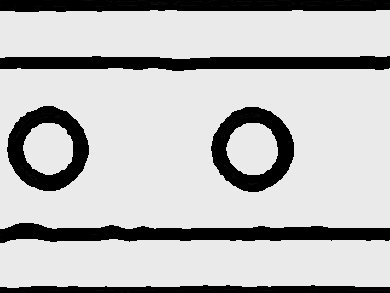Jean-Christophe Baret and colleagues, Max Planck Institute for Dynamics and Self-Organization, Göttingen, Germany, have used high AC voltage of up to 1000 V to control exactly how many droplets flow through tiny channels on a plastic chip per second. The tiny water droplets are only visible under the microscope. The higher the applied voltage, the quicker the succession of the droplets – the higher their frequency.
To translate these frequencies into musical notes, the researchers added a fluorescent agent to the water, so that the droplets emitted light when illuminated with a laser. A photomultiplier tube converted the light into electric signals, which in turn were used to create the respective notes with a sound card.
The frequencies differ from the original note by up to 5 %. This is roughly equivalent to a half-tone. Due to the mechanical properties of the microfluidic chip, the intervals between the successive droplets are not always identical. Also the electric voltage changes with a slight delay.
The ability to control the movement of droplets with a high degree of precision using electric voltage is seen as a significant step in the development of a medical chip laboratory. Electric fields could, e.g., be used to sort out infected cells or mutated DNA.
- The Microfluidic Jukebox,
Say Hwa Tan, Florine Maes, Benoît Semin, Jérémy Vrignon, Jean-Christophe Baret,
Sci. Rep. 2014.
DOI: 10.1038/srep04787
- “Music Video”
The first test of the researchers was to play the Ode to Joy from Beethoven.




